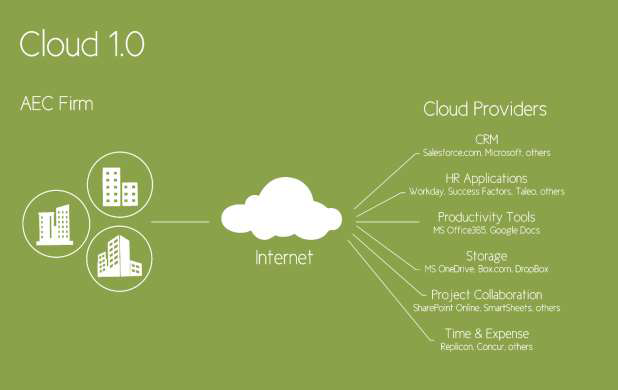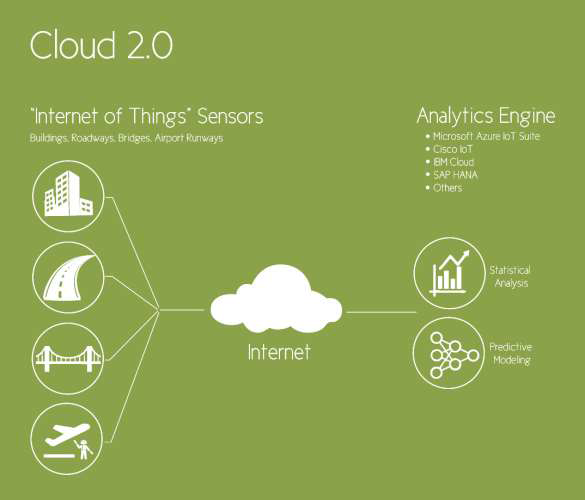By now, most people have heard of “the cloud” as a delivery platform for software applications and other services. And as the underlying technology utilized by these cloud-based services continues to evolve, you may also now be hearing the term “Cloud 2.0” to describe next generation cloud service.
By now, most people have heard of “the cloud” as a delivery platform for software applications and other services. And as the underlying technology utilized by these cloud-based services continues to evolve, you may also now be hearing the term “Cloud 2.0” to describe next generation cloud services.
But what exactly is meant by Cloud 1.0 vs. Cloud 2.0, and what opportunities does Cloud 2.0 present for your firm? We’ll attempt to shed some light on these questions here.
In its most basic sense, Cloud 1.0 describes the ability for software providers to host their applications in their data centers, and allow customers to access these applications over the Internet, in many cases as a “service” where they pay a per-user, per-month subscription fee to access the software. This is in contrast to the traditional model of purchasing and hosting your applications within your internal data centers, known as “on premise” deployments.

The primary benefits of Cloud 1.0 were the ability to accelerate software deployments, improve access to systems for remote users and offices, reduce IT maintenance and support requirements, and lower costs by leveraging shared investments in the underlying data center and infrastructure. These benefits were often weighed against perceived disadvantages related to a loss of control over your systems and data, concerns around security, and higher long-term costs in some cases.
Based on this tradeoff, Cloud 1.0 saw significant adoption in categories such as CRM, Human Resource Management, and project management and collaboration tools, but lower adoption rates for financial management, ERP, and other mission-critical applications, although this is certainly changing.
While “Cloud 1.0” as a software delivery model continues to mature, the evolution of the cloud (known by some as Cloud 2.0) is enabling the development of disruptive technologies that leverage the cloud’s massive computing power and storage capabilities to enable cutting-edge analytical tools that are helping businesses drive previously unimaginable value to their clients.
Two of these emerging technologies are “machine learning” and the Internet of Things (IoT), which harness vast amounts of data from the field and utilize predictive analytics to anticipate future outcomes based on learned results.
Consider, for example, the ability to put sensors on buildings, roadways, bridges, and other structures that send data in real-time to an advanced cloud-based analytics engine, which can then use statistical analysis and predictive modeling to anticipate potential design flaws, maintenance requirements, and other outcomes.
Not only would these capabilities deliver incredible improvements in the design and construction process, but your firm’s ability to leverage these advanced technologies where others cannot would differentiate your firm from its peers and help to build a sustainable competitive advantage.

The emergence of these and other Cloud 2.0 technologies provides opportunities for A/E/C firms to revolutionize how they view the design process and serve their clients. For more details on these advancements and the impact they may have on your firm, join our webcast on November 3rd, 2015 or attend our live presentation at the PSMJ Industry Summit in San Francisco on December 3rd.
About the Author: Andy Yeomans is U.S. Director of Business Development for SAGlobal, a Microsoft consultancy focused on helping A/E/C firms optimize their performance through the implementation of the Microsoft Dynamics AX ERP system. Andy has 20 years of IT industry experience in a variety of sales, marketing, corporate development, and leadership roles. Over the course of his career, Andy has helped hundreds of organizations evaluate and implement enterprise software applications. Andy was instrumental in the creation of SAGlobal’s industry strategy, and since 2008 has worked exclusively with A/E/C firms and other project-driven organizations to help drive performance improvement initiatives through the implementation of Microsoft Dynamics AX.



